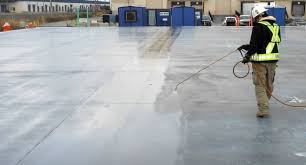
Why water curing is very much important in civil construction
Why water curing is very much important in civil construction?
Curing is very important for civil construction. Even a common person, with no technical knowledge, is aware that proper curing needs to be done to structures. But what they don’t know is why is it important. In this article we will tell you exactly what Curing is and why is it important for construction works.
Before understanding what curing is we need to understand concrete. In India majority of construction is concrete-based. Now, concrete gets its strength from the hydration of cement particles present in it. Hydration is the reaction of cementitious particles with water, which leads to strength gain. Now hydration is a continuous process. It is fast initially and the rate of hydration decreases after some time.
So for hydration to take place, the presence of moisture is important. The curing of concrete is the process of maintaining moisture in concrete during the early stages so that strength is gained and the concrete is durable. Thus, Curing can also be described as keeping the concrete moist and warm enough so that the hydration of cement can continue.
Curing is simply the process of keeping the hardened concrete moist so that strength gain continues.
The microstructure is responsible for the Material properties. As discussed, Curing assists the cement hydration reaction to progress steadily and results in the development of calcium silicate hydrate gel, which is responsible for binding the aggregates and this leads to the formation of a rock-solid mass, which makes the concrete denser and thereby decreases its porosity and ultimately improves the physical and mechanical properties of concrete.
Well, cured concrete minimizes the thermal, plastic & drying shrinkage cracks, which makes concrete more watertight. Because of this, moisture and water chemicals will not enter into the concrete which would result in improved durability. Concrete that dries out quickly undergoes considerable early age shrinkage. Inadequate curing contributes to weak and dusty surfaces.
Good curing requires concrete to be damp until the concrete is has gained sufficient strength. Efficient curing ensures that concrete is resistive to corrosion and is resistant to wind and heat. The period of curing is different for different types of work and temperature conditions.
At the site, sometimes curing is not done properly and this would lead to cracks in the structure and might also result in significant damage after a long time. Without curing, concrete is just a brittle mixture that will break down under excessive loads. Although, maintaining proper water is important for Curing and Curing isn’t even possible without water, too much water will make the concrete weak and would result in cracks.
Curing of concrete must begin as soon as possible after placement and finishing and it must continue for a reasonable time as per the relevant standards. Also, protective measures to control moisture loss from the concrete surface are essential to prevent cracks.
Curing is very important for civil construction.Curing is simply the process of keeping the hardened concrete moist so that strength gain continues
Easy Nirman Construction was Never Easy Before Us









No Comments yet ...